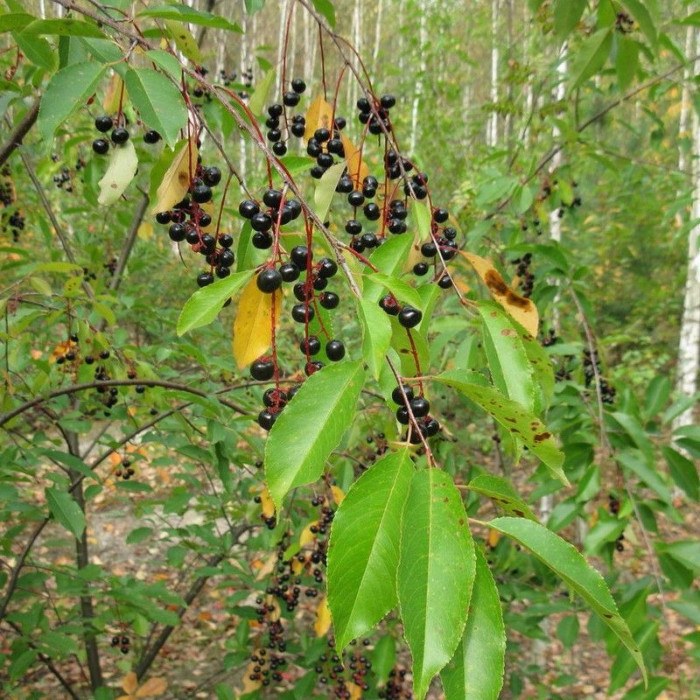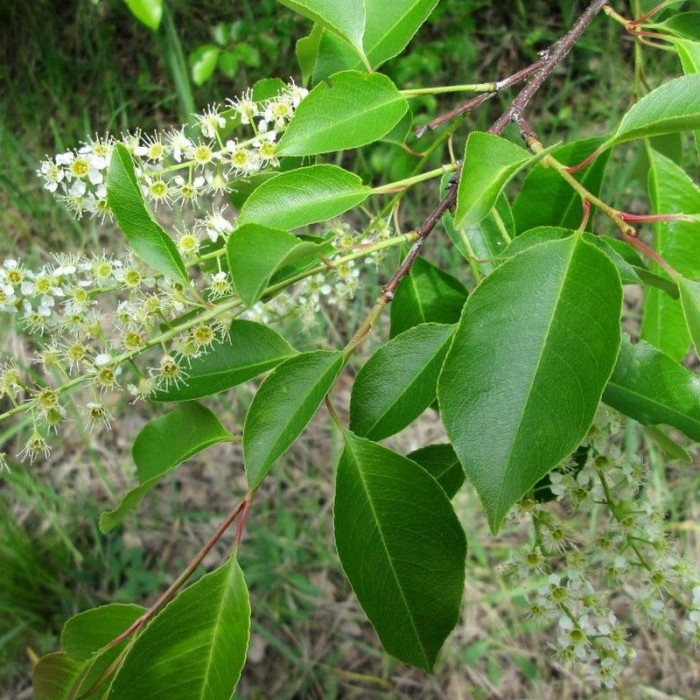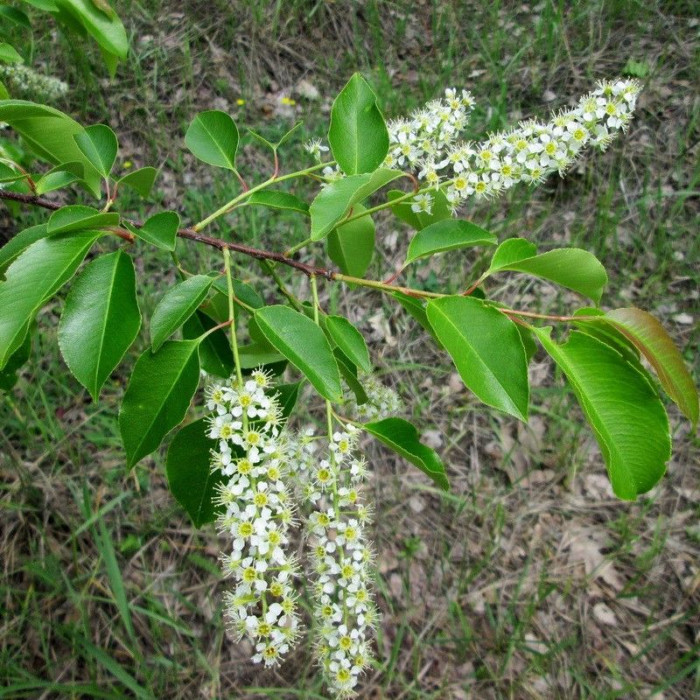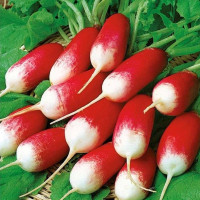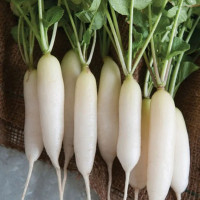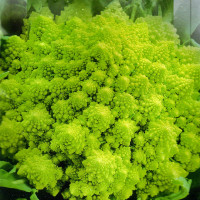Wild black cherry, black cherry, bird cherry, rum cherry, or mountain black cherry / Prunus serotina (Padus serotina) - deciduous tree 18-27 m high, with a regular oval dense crown, fast growing. The trunk is long and straight. The bark of young trees is smooth, with numerous short, narrow, horizontally directed lentils (lens-shaped loose tubercles), reminiscent of birch.
With age, the bark becomes very dark, almost black, loose, divided into small, rough, irregularly shaped plates. The branches are drooping, thin, reddish-brown, sometimes covered with gray eridermis, and have a distinct bitter odor and taste of almonds. The buds are very small, covered with shiny, reddish-brown or greenish scales. Leaf scars are small and semicircular with three scars from a bundle of blood vessels.
The leaves are alternate, simple, 6-14 cm long, oval or lanceolate, finely toothed at the edges, have very small inconspicuous glands on the petiole, dark green and shiny above, pale below, usually with thick, yellowish-brown, sometimes white pubescence along the middle veins. In autumn, the leaves turn yellow-orange and later fall off. The flowers are about 8 mm in diameter, white, drooping, fragrant, collected in a raceme 6-15 cm long, appear in May.
The fruit is a purplish-red round drupe about 1 cm in diameter, almost black when ripe, with a bitter-sweet and viscous taste, ripens in late summer, edible.

No questions about this product, be the first and ask your question.


